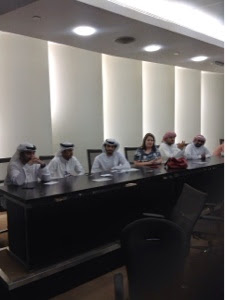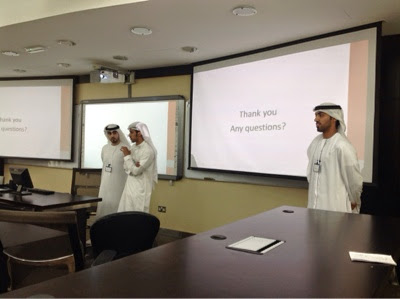This blog post provides an article snapshot of our recently published article on SMEs and innovation in the United Arab Emirates. If you would like to cite the article please use the following:
Erogul, M. S., & Van Horne, C. (2014). Entrepreneurial Innovation and Policy Implications in the United Arab Emirates. Journal of Enterprising Culture,22(02), 185-208.
The link to the article is available here: Entrepreneurial Innovation in the UAE
As the goal of the UAE to become an innovative economy, innovation will also need to be the life blood of newly formed SMEs and not just large established enterprises. More students graduating from Science and Technology degrees will encourage more to form businesses in sectors other than the service industries and business education will enable entrepreneurs to understand innovation processes and how to adapt them to best fit market needs.
The UAE still has some of the most internationally focussed SMEs on the planet... But for SMEs to become truly competitive they will need to innovate in their products, services, marketing techniques, delivery and supply chain management mechanisms and more. Additionally, the strength and ease of technology transfers, advanced entrepreneurship education and networking opportunities, and significant amounts of early-stage funding are important areas for policy development.
Erogul, M. S., & Van Horne, C. (2014). Entrepreneurial Innovation and Policy Implications in the United Arab Emirates. Journal of Enterprising Culture,22(02), 185-208.
The link to the article is available here: Entrepreneurial Innovation in the UAE
Murat and I wrote this paper based on GEM data from 2009 and 2011 (Murat was an author of the 2009 report and I was an author of the 2011 report). We looked more closely at the data concerning the innovativeness of SMEs in the UAE - both newly formed and established. The goal was to analyse the data to develop some policy recommendations specifically targeted at getting fresh entrepreneurs to choose innovation over "me too" in terms of technologies used and in their products and services offered to customers.
The findings indicate that business activity in the UAE among Emiratis
is concentrated in consumer and service oriented ventures, such as retail,
restaurants, health, education and social services. Secondly, UAE businesses in
general are skilled at technology adoption, but not technology innovation.
Thirdly, it has been found that new and young
businesses in the UAE have minimal involvement in the high/medium technology
sectors.
If we look at Figure 1 we can see that basically all newly formed SMEs in 2009 -2011 period were in low tech sectors - except for RAK, where nearly 15% of entrepreneurs felt that they were operating in the high tech sector.
Figure 1: Technology level of the sector by Emirate (2009 and 2011)
When it comes to technologies incorporated into the products and services developed by new SMEs the figures are a little more promising. Especially when it came to women entrepreneur, half of whom felt they offered products and services that incorporated the latest technology. This compared to men, where less than one in five felt they used the latest technology. Further research is needed to see what these differences are attributed to... but it would be very interesting to investigate.
As the goal of the UAE to become an innovative economy, innovation will also need to be the life blood of newly formed SMEs and not just large established enterprises. More students graduating from Science and Technology degrees will encourage more to form businesses in sectors other than the service industries and business education will enable entrepreneurs to understand innovation processes and how to adapt them to best fit market needs.
The UAE still has some of the most internationally focussed SMEs on the planet... But for SMEs to become truly competitive they will need to innovate in their products, services, marketing techniques, delivery and supply chain management mechanisms and more. Additionally, the strength and ease of technology transfers, advanced entrepreneurship education and networking opportunities, and significant amounts of early-stage funding are important areas for policy development.













.jpg)




+Abu+Dhabi+Educational+Council.jpg)













